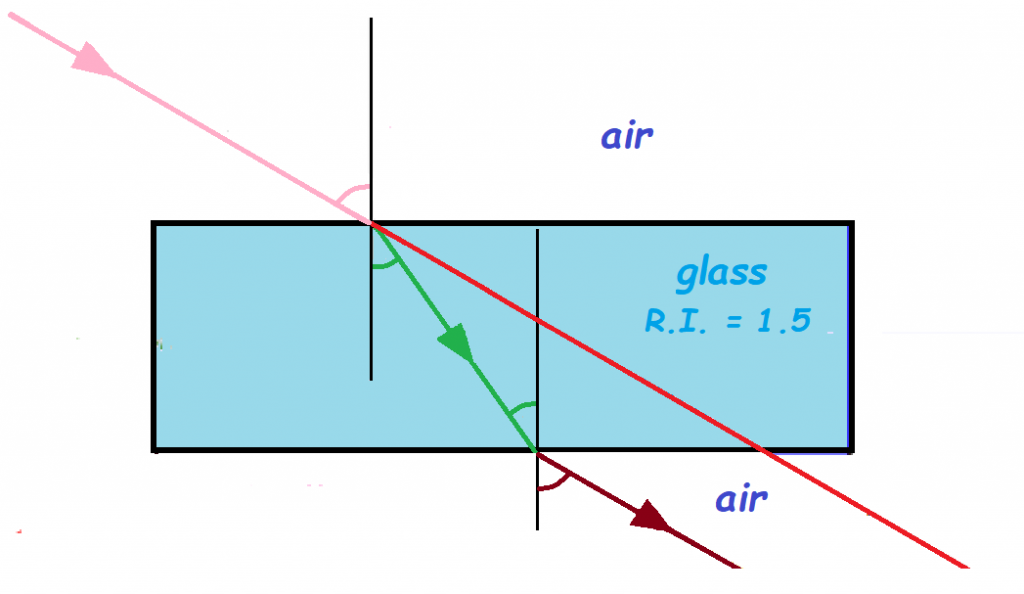The wave equation for light is:
c = ƒ λ where c = 300,000 km/s
ƒ = frequency
λ = wavelength
This means that as wavelength increases, frequency must necessarily decline.
However, for the last century, it has been the practice in Mathematical Physics to hold frequency constant and to toy around with both the wavelength and the speed of light when a beam or ray travels between mediums of different densities. In other words, mathematical theorists give lip service to this equation.
Instead, they have created an incongruous Ptolemaic system known as refractive index whereby light travels slower through different media. Experiments have led them to conclude that there are materials that have refractive indexes below 1 and even in the negative range of values. Theorists do not propose that light travels faster than 300,000 km/s in these mediums. They explain the anomalies away in terms of phase velocity.
Refractive Index
The speed of light here on Earth is calculated, typically using round-trip (reflected) light and measuring angles. Because the angle in which light refracts is different for different media, theorists have devised a table of speeds of light (refractive index) for different material. For glass it is anywhere between 1.45 to 1.5, meaning that light travels about 1/3 slower through glass as it does through the vacuum.
(≈ 200,000 km/s
vs.
c = 300,00 km/s).

Take a two strand rope, 1 meter in length. Torque it. You should have more links and each link should be shorter. That’s what the wave equation of light describes.
c = ƒ λ where c = 300,000 km/s
ƒ = frequency
λ = wavelength
(# links is inversely proportional to linklength)
This is the equation of a rope!
